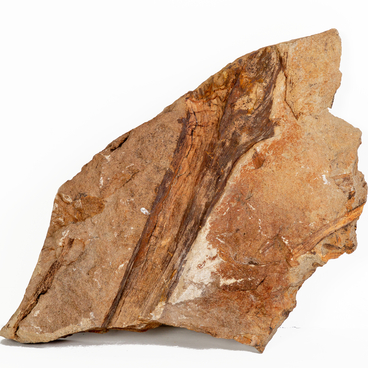Sauropods lived approximately 230 - 66 million years ago on all continents, including Antarctica. To date, about a hundred genera of sauropods are known, and every year the number of discovered species is steadily growing. The most famous representatives of sauropods are Diplodocus, Brachiosaurus, and Apatosaurus. The typical sauropod was a herbivorous four-legged dinosaur. The body was similar to that of an elephant, namely: thick legs, barrel-shaped body, and a large hanging belly. The animal’s main bodyweight was concentrated in its huge belly, which was necessary to digest large quantities of plant food. In order to extract the maximum amount of nutrients from such a diet it had to process the food for as long as possible in its digestive system.
The neck of the sauropod was long and ended in a rather small head compared to the overall size of the body. The neck itself was very flexible. It is believed that the tail was used in mating courtship. Males beat their tails on the ground, thus creating a deafening roar for the hearing of modern humans. The female was sought by the male who made the loudest sound. In the part of the tail that was faster than the speed of sound on impact, the vertebrae fused together for strength. Tail strikes could also be used for protection from predators.
Almost all of the sauropods lived in herds. The evidence for this is multiple fossils concentrated in one place. The evolution of sauropods demonstrates a phenomenal ability to adapt to changing conditions. It has resulted in an incredibly large variety of animals. The size and weight of the giants is a matter of dispute among experts and has a wide range of estimates. It is assumed that the largest sauropod could reach a length of about 30 meters and up to 17 meters in height. The weight could reach up to 100 tons. These were the largest dinosaurs and land animals in the history of the planet. On the territory of the Republic of Buryatia, dinosaur tracks were found in the Gusinoozerskaya, Bichurskaya, and Ivolginskaya Basins, in the valley of the Dzhida and Kirana Rivers, as well as in the Bauntovskiy District.
Almost all of the sauropods lived in herds. The evidence for this is multiple fossils concentrated in one place. The evolution of sauropods demonstrates a phenomenal ability to adapt to changing conditions. It has resulted in an incredibly large variety of animals. The size and weight of the giants is a matter of dispute among experts and has a wide range of estimates. It is assumed that the largest sauropod could reach a length of about 30 meters and up to 17 meters in height. The weight could reach up to 100 tons. These were the largest dinosaurs and land animals in the history of the planet. On the territory of the Republic of Buryatia, dinosaur tracks were found in the Gusinoozerskaya, Bichurskaya, and Ivolginskaya Basins, in the valley of the Dzhida and Kirana Rivers, as well as in the Bauntovskiy District.



